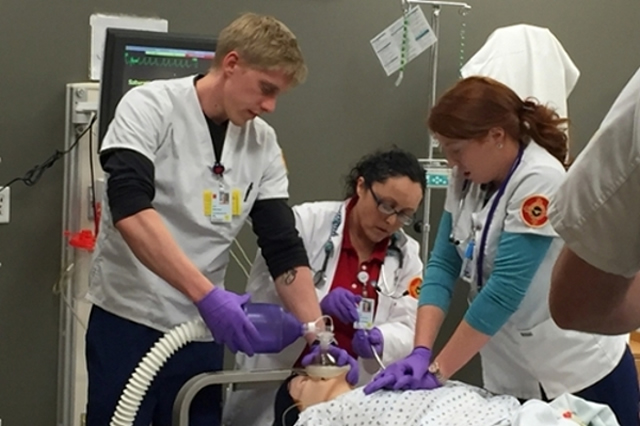
Nursing ETDs
Publication Date
Winter 12-18-2018
Abstract
The prevalence of diabetes mellitus (DM) is higher in American Indians/Alaska Natives (AI/AN) than in any other racial or ethnic group in the United States (U.S. Department of Health and Human Services [USDHHS] Centers for Disease Control and Prevention [CDC], 2018). In response to this escalating health issue, the U.S. government funded a number of DM education and treatment programs focusing on AI/AN populations. The purpose of this study was to evaluate the New Onset Diabetes Education Program (NODEP) based at Northern Navajo Medical Center (NNMC) in Shiprock, N.M.
The Navajo philosophy of learning was used as a guiding framework. This two-phase study examined the effectiveness of NODEP using medical records and survey data. In Phase I, glycosylated hemoglobin (HbA1c) levels and body mass index (BMI) data were collected via retrospective chart reviews on Navajo adults (n = 480) diagnosed with DM and referred to NODEP from January 1, 2010, to December 31, 2015. Study participants were assigned to one of four groups (n = 120): (a) attended a full three-day course; (b) attended a one-day course; (c) began the three-day course but did not complete it; and (d) people who were referred but did not attend any portion of NODEP. During Phase II, a researcher-designed survey was administered prospectively to capture participants’ perspectives on the strengths and weakness of the program as well as on barriers and facilitators to attendance.
Participants who attended and completed either version of NODEP at NNMC showed significantly improved levels of HbA1c over 24 months. Participants who completed the three-day course showed a clinically meaningful improvement from a mean of 10.0% at the time of referral to ≤ 7.0% from six to 24 months. Similarly, those who completed the one-day course had a mean HbA1c of 9.3% to ≤ 7.3% from six to 24 months. In contrast, mean HbA1c was never less than 8.0% for those who did not complete or never started the program. Moreover, study participants who did not attend any portion of NODEP showed a statically significant worsening HbA1c level over 24 months.
Responses to the survey indicated that a large majority (90.9%) of participants who attended NODEP to completion (n = 77) thought that the most helpful information was “understanding what DM is” and that the least helpful information included discussion of DM medications (9.1%). The most significant barrier to attending NODEP was that it was not held in the outlying communities. Themes from the participants’ comments comprised prevention, management, variation in teaching strategies, self-reliance, outreach programs and challenges. Further, participant recommendations included making NODEP more accessible by teaching the course in rural communities and by providing access to a counselor, traditional healer, or to community support groups.
Degree Name
Nursing
Level of Degree
Doctoral
Department Name
College of Nursing
First Committee Member (Chair)
Kim Cox
Second Committee Member
Mark Parshall
Third Committee Member
Dr. Kimberly Mohs
Keywords
Navajo, Diabetes Education, American Indian, Native American, Diabetes
Language
English
Document Type
Dissertation
Recommended Citation
Bartley, Denise S.. "Evaluation of the New Onset Diabetic Education Program for Navajo Adults." (2018). https://digitalrepository.unm.edu/nurs_etds/44
Included in
Adult and Continuing Education Commons, Nursing Commons, Nutritional and Metabolic Diseases Commons
